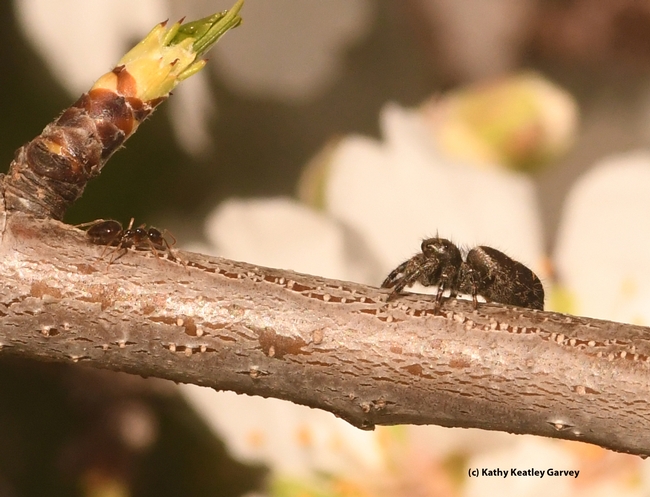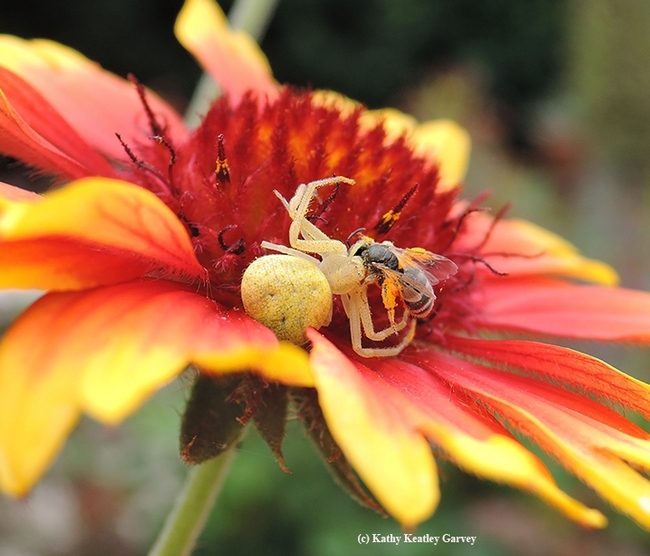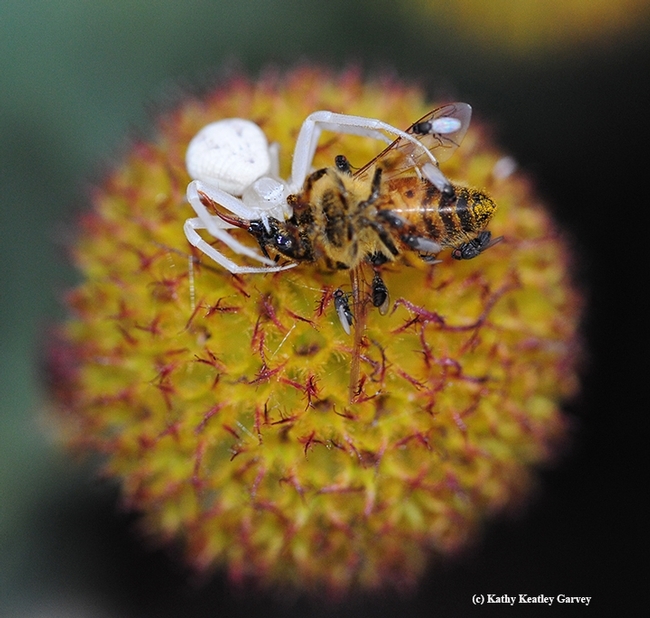- Author: Kathy Keatley Garvey
I did not save a spider yesterday.
Did not save one today, either.
Well, if I had seen one....
Wednesday, March 14 was "Save a Spider Day" in the United States, according to a post by the Entomological Society of America (ESA). Darn, I missed it!
ESA usually focuses on insects (spiders are not insects) but ESA is all inclusive in this welcoming world of arthropod diversity.
Their online text is worth repeating:
"March 14 is Save A Spider Day in the U.S. and while Charlotte and Peter Parker have been fighting the good fight to redeem the spider's reputation, arachnophobia is still running rampant, especially in the United States. One study conducted during a freshman entomology class at Colorado State University found that "the most commonly mentioned specific factor in spider fear was bites and the perceived danger of spiders with figures indicat[ing] that spider fear levels of college students in Colorado are substantially higher than those reported from European general populations."But are spiders the nightmare they've always been portrayed to be? Do they bite? Do they carry diseases? Are brown recluse spiders everywhere just waiting to strike?
"First of all, a lot of those spider bites you've heard about weren't actually spider bites. A study in the Journal of Medical Entomology has shown that there are several medical conditions that can be commonly misdiagnosed as spider bites including "bacterial, viral, and fungal infections; vasculitis; dermatological conditions; bites and stings from other arthropods; and miscellaneous causes such as allergies or drug reactions, chemical burns, reactions to poisonous plants, or diabetic ulcers." The study also expanded on the idea that Hobo Spiders are disease-transferring which it turns out, they are not. Other common house spiders have also had their name cleared when it comes to spreading MRSA."
The ESA then turned to the brown recluse spiders, pointing out the misidentification and the false information about bites: "Take this study where an infestation of 2,055 brown recluse spiders was collected in a Kansas home that a family had been living in for many years, all without ever receiving a spider bite."
"So that spider in your cupboard?" ESA asks. "Probably not a brown recluse. It's probably not carrying a disease. And it may have just killed a tick for you. So try saving a spider today, it's worth it."
The last time I saw a spider was on Valentine's Day, Feb. 14. It was a jumping spider perched on an almond tree on Bee Biology Road, University of California, Davis. It had crossed paths with a winter ant (Prenolepis imparis). Neither wanted to be anyone's Valentine. Neither needed saving.
But I distinctly remember the other spiders I have seen and photographed in our pollinator garden. They didn't need saving, either.
Well, perhaps the prey needed saving...but everybody has to eat!






Many thanks to Entomological Society of America for their care.